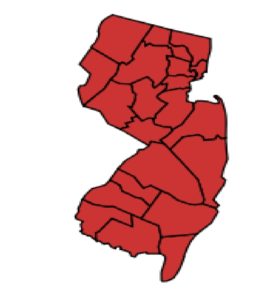 As crews continue cleaning up from Tropical Storm Isaias, many readers have been inquiring how it could be that the state was under multiple declared “emergencies” at the same time, including a State of Emergency declared by New Jersey Governor Phil Murphy ahead of the storm, which was in addition to the ongoing Public Health Emergency and a separate State of Emergency, which were both declared on March 9th in response to the coronavirus.
As crews continue cleaning up from Tropical Storm Isaias, many readers have been inquiring how it could be that the state was under multiple declared “emergencies” at the same time, including a State of Emergency declared by New Jersey Governor Phil Murphy ahead of the storm, which was in addition to the ongoing Public Health Emergency and a separate State of Emergency, which were both declared on March 9th in response to the coronavirus.
While the Health Emergency must be renewed every 30 days – as the Governor has been doing ever since – a State of Emergency is indefinite and remains in effect until lifted by the Governor.
But what exactly is a State of Emergency anyway? Who does it affect? And why the need for multiple declarations, isn’t one enough?
Below are the answers to many of your questions regarding a State of Emergency and what it actually means:
What is a State of Emergency?
According to the New Jersey Office of Emergency Management (NJOEM), the Governor can declare a State of Emergency by signing an Executive Order when he/she “believes a disaster has occurred or may be imminent that is severe enough to require State aid to supplement local resources in preventing or alleviating damages, loss, hardship or suffering.”
The declaration authorizes the Governor to speed State agency assistance to communities in need by bypassing the typical bureaucratic process and enables him to make resources available immediately to rescue, evacuate, shelter, provide essential commodities (i.e., heating fuel, food etc.) In addition, it allows the State to seek federal assistance when the scope of the event exceeds the State’s resources.
(A “disaster” is defined by New Jersey law as an “unusual incident resulting from natural or unnatural causes which endangers the health, safety or resources of the residents of one or more municipalities of the State, and which is or may become too large in scope or unusual in type to be handled in its entirety by regular municipal operating services.”)
Who is the Order intended for?
The declaration typically empowers the NJOEM to act on behalf of the Governor to employ the resources and assets of State, local and private agencies to provide immediate assistance to localities. Usually, the New Jersey State Police, National Guard, and departments of Environmental Protection, Transportation and Health are called upon rather quickly to respond to the event, and other departments are added as needed. For the March 9th declaration, the Health Department was the primary agency called upon to coordinate the coronavirus response.
Am I allowed to drive?
A common mistake people make when hearing that a State of Emergency is declared, is that they are automatically prohibited from travelling outside. That is not true. A State of Emergency does not restrict movement. It can, however, allow the Governor to limit access to affected areas due to concerns for public safety, which may involve banning the use of vehicles for a period of time. For example, the State of Emergency declared on March 9 in response to the coronavirus obviously did not limit any travel, though it was discouraged.
If travel is being limited, the Office of Emergency Management “will alert the public using all available means, including, but not limited to: the Emergency Alert System, urgent press releases, DOT highway signs, law enforcement teletypes, etc.”
So why the need for multiple declarations?
Because each Executive Order deals specifically with the emergency it was written for, it will only pertain to the state agencies needed for that crisis. Therefore, a new State of Emergency would have to be declared for each new emergency.
